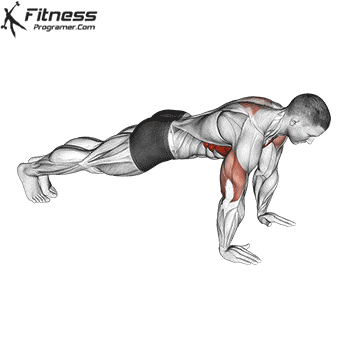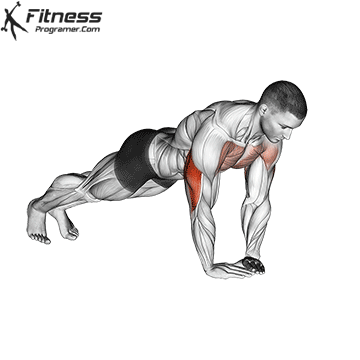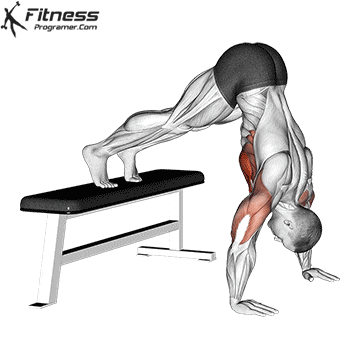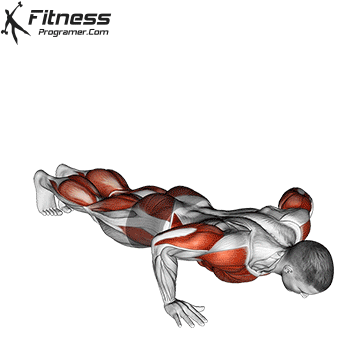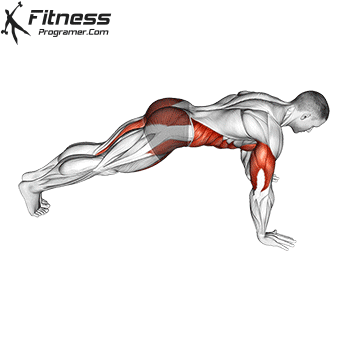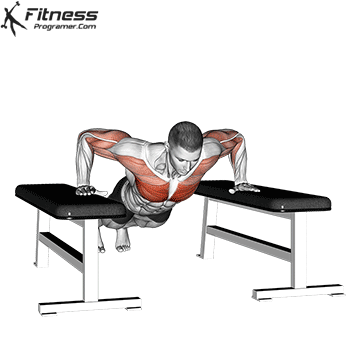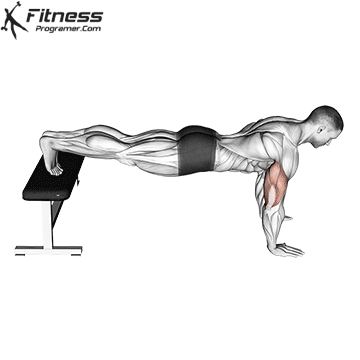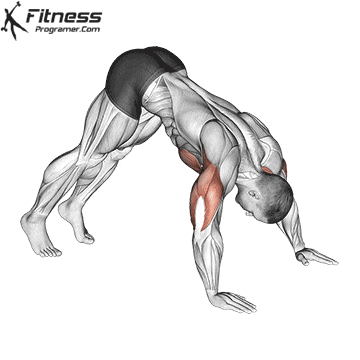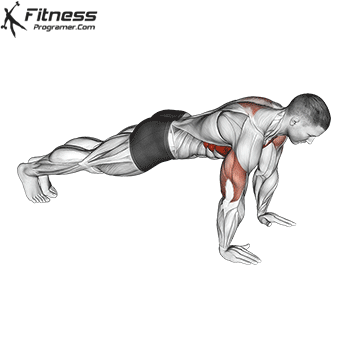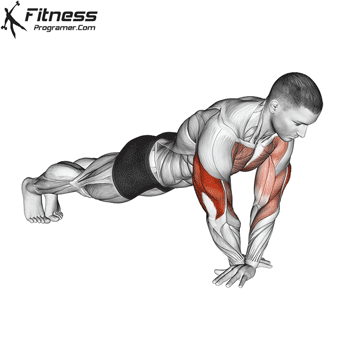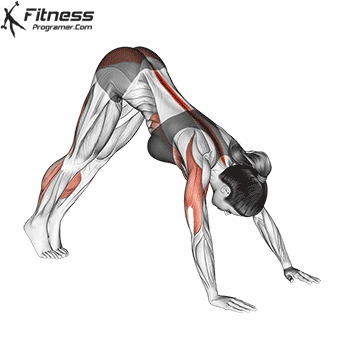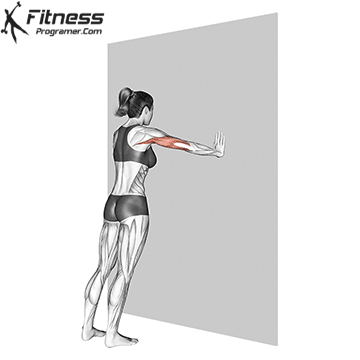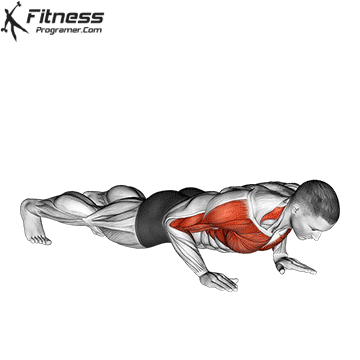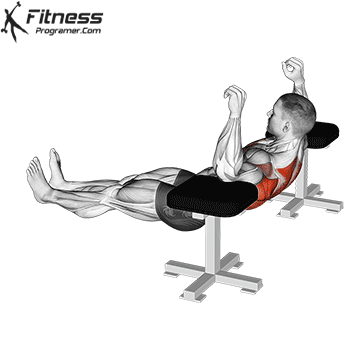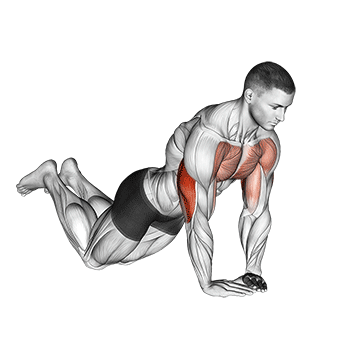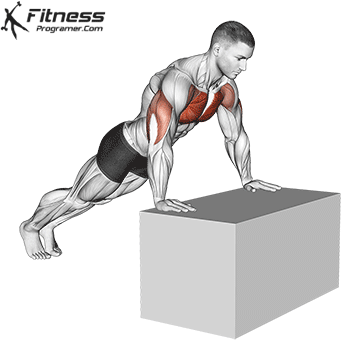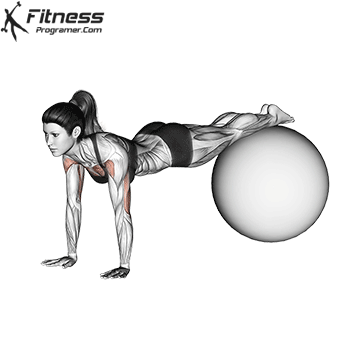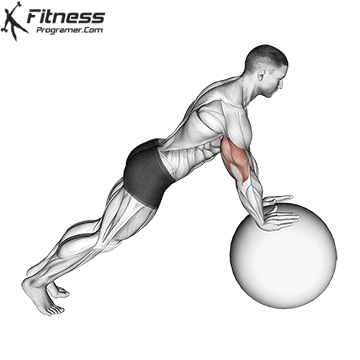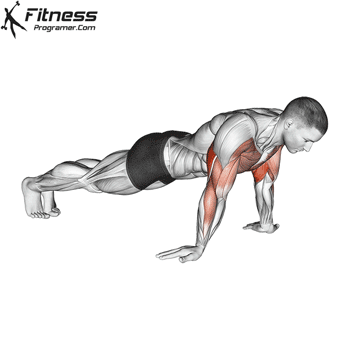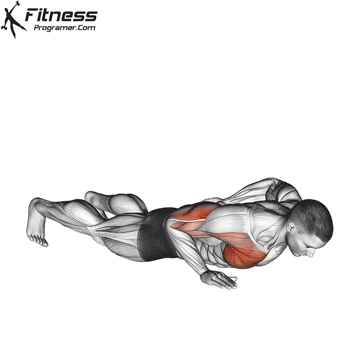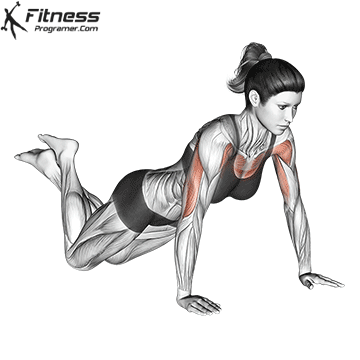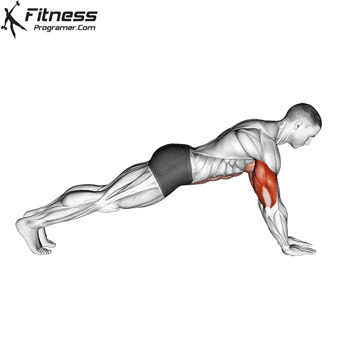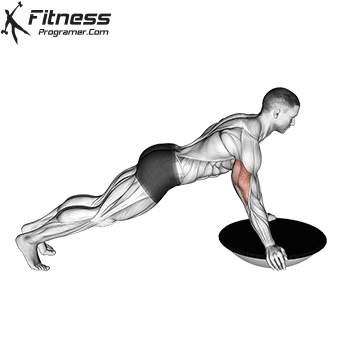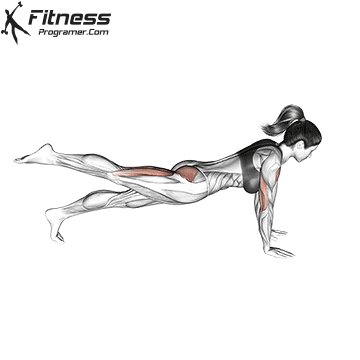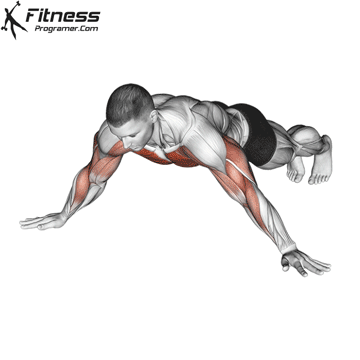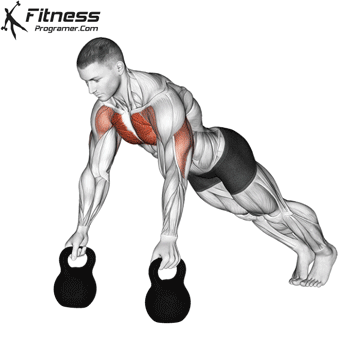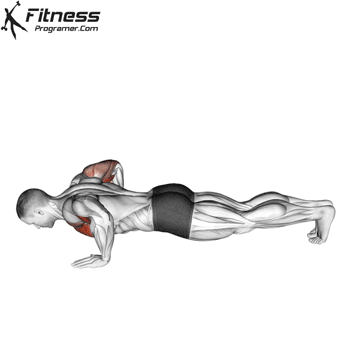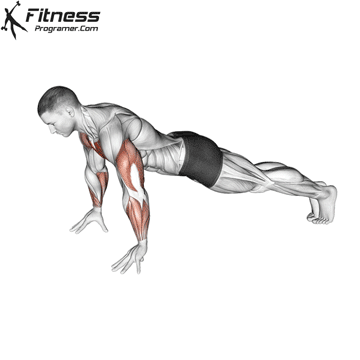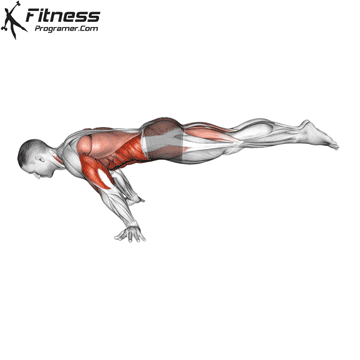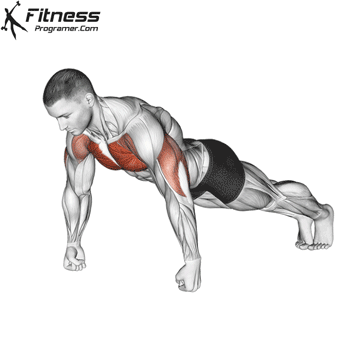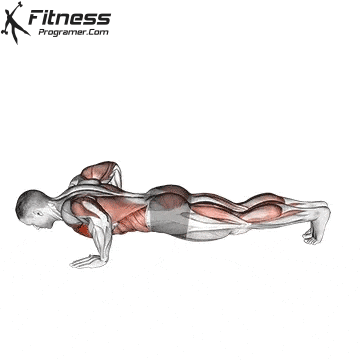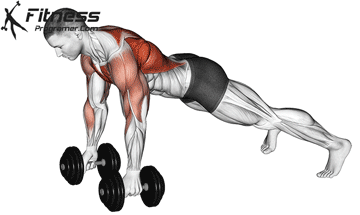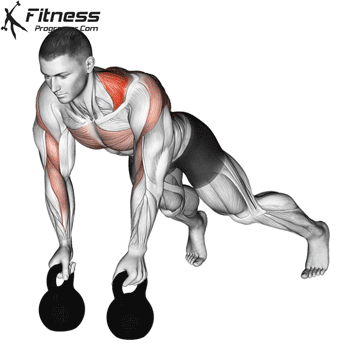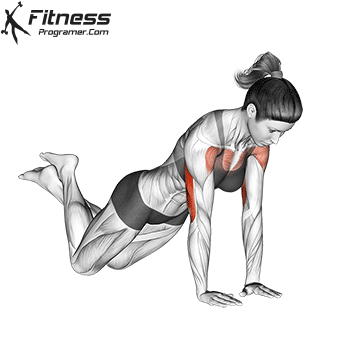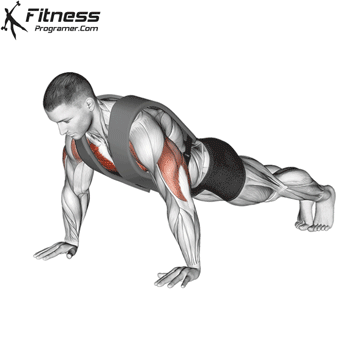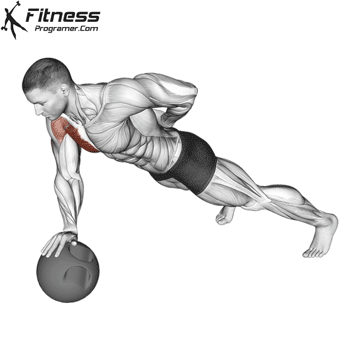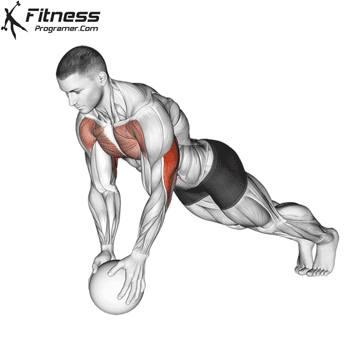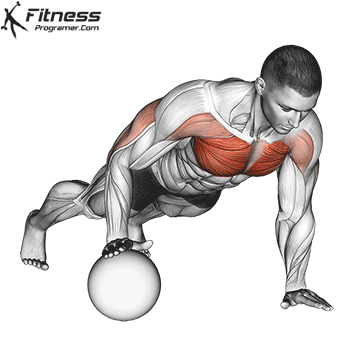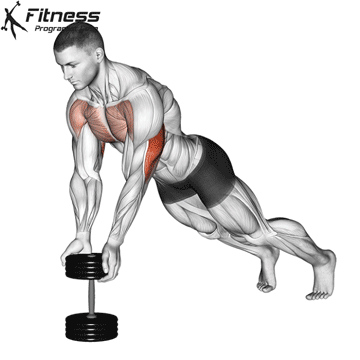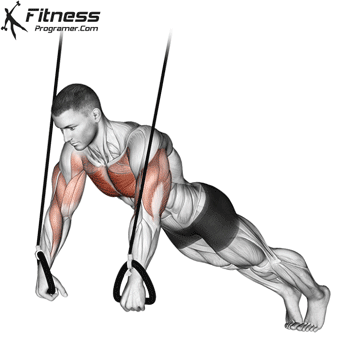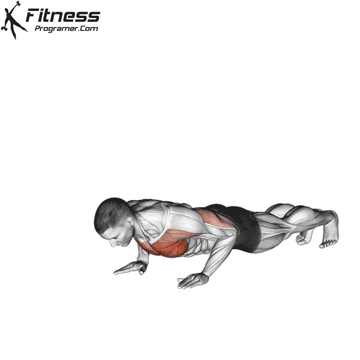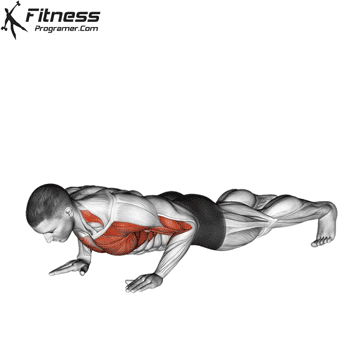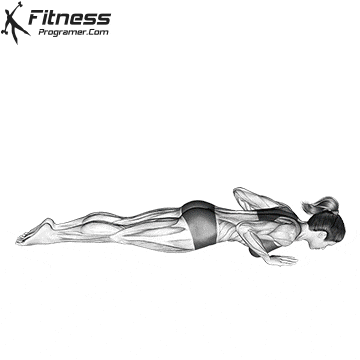Overview
A one arm push-up with support is a push-up variation performed with one hand on an elevated surface, such as a bench or platform, while the other hand supports the movement by resting on the ground for assistance. This variation provides additional support, making it an excellent progression for those working toward a full one arm push-up while still targeting the chest, shoulders, triceps, and core.
How to Perform a One Arm Push-Up with Support
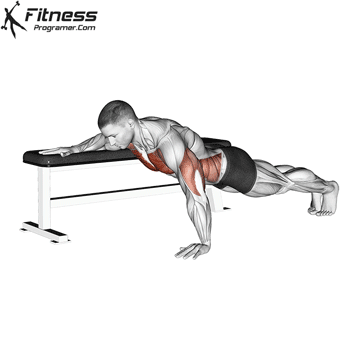
Step-by-Step Guide
Setup:
- Find a sturdy bench, box, or elevated surface for support.
- Get into a push-up position with your feet slightly wider than shoulder-width apart for balance.
Hand Placement:
- Place your working arm firmly on the floor, aligned with your chest.
- Position your supporting hand on the bench or elevated surface.
Lowering Phase:
- Engage your core and glutes to maintain body alignment.
- Slowly lower your body toward the ground while keeping your elbows at a 45-degree angle.
Pressing Phase:
- Push through your working arm, keeping your core tight to maintain stability.
- Extend your arm fully and return to the starting position.
Repetitions and Sets:
- Perform 3 to 4 sets of 6 to 12 reps per side, depending on your fitness level.
Tips for Proper Form
- Engage your core to prevent your hips from sagging.
- Keep your body in a straight line from head to heels.
- Control the movement to avoid using momentum.
- Gradually reduce support to progress toward a full one arm push-up.
- Maintain a steady breathing pattern throughout the exercise.
Common Mistakes to Avoid
- Dropping the hips: Maintain a straight body line to prevent lower back strain.
- Over-relying on the support arm: The working arm should do most of the work.
- Shrugging the shoulders: Keep your shoulders down and engaged.
- Rushing through reps: Focus on slow, controlled movements for maximum muscle activation.
- Not switching sides: Train both arms evenly to avoid muscular imbalances.
Benefits of the One Arm Push-Up with Support
1. Builds Upper Body Strength
This exercise targets the chest, shoulders, and triceps, helping develop pressing power.
2. Enhances Core Stability
Balancing on one arm forces the core muscles to work harder, improving stability and coordination.
3. Improves Muscle Imbalances
Since each arm works independently, this exercise helps correct strength imbalances between the left and right side.
4. Increases Functional Strength
The one arm push-up with support mimics real-world movements, improving overall functional fitness.
5. Prepares for Advanced Variations
This movement serves as a progression toward full one arm push-ups, making it an excellent step for calisthenics training.
How to Incorporate Into Your Routine
- Calisthenics Workout: Perform 3 to 4 sets of 6 to 12 reps per side as part of an upper body workout.
- Progression Training: Reduce the height of the support over time to increase difficulty.
- Pair with Core Work: Combine with planks or hanging leg raises for enhanced core activation.
- Circuit Training: Include in a push-up progression routine with incline push-ups and standard push-ups.
- Warm-Up or Finisher: Use this movement as part of a warm-up for chest workouts or as a burnout set at the end.
Muscles Worked
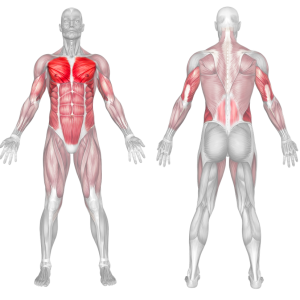
Other Variations
Push-ups can be modified and progressed to suit your fitness level. You can start with knee push-ups and work your way up to more challenging variations like diamond push-ups or one-arm push-ups.

